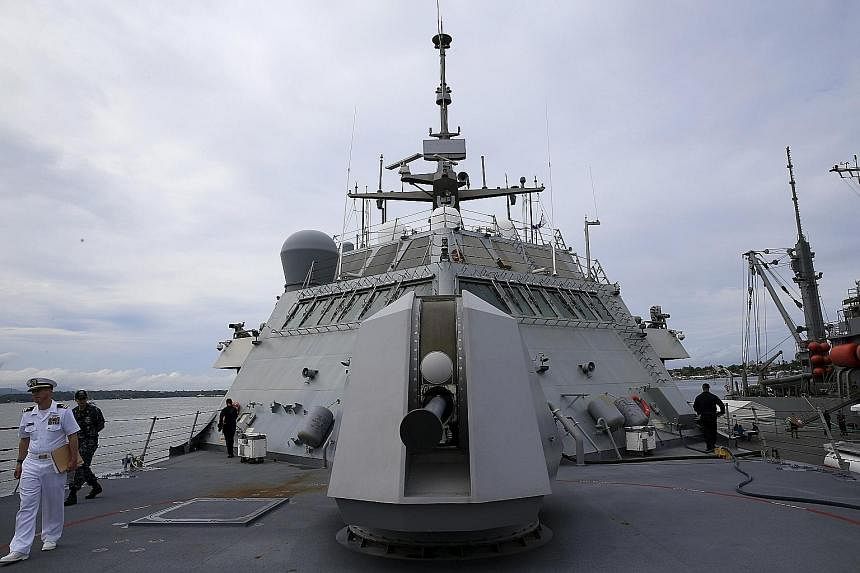WASHINGTON - Weeks before one of the US Navy's new littoral combat ships (LCS) departed for Asia, tests had exposed its vulnerability to a potential enemy attack, according to the Pentagon's testing office.
A "total ship survivability test" of the USS Fort Worth conducted off Southern California in October "highlighted the existence of significant vulnerabilities" in the design of the vessels built by Lockheed Martin, according to Dr Michael Gilmore, the Pentagon's director of combat testing.
"Much of the ship's mission capability was lost because of damage caused" by the simulated effects of a weapons attack and a hypothetical fire that followed, Dr Gilmore said in an assessment for Congress obtained by Bloomberg News.
While the Fort Worth has never been in combat, it had an encounter with a Chinese ship in disputed waters of the South China Sea last month. Dr Gilmore's report, mandated by lawmakers, may add more congressional scrutiny of navy budget requests for the littoral combat ship, designed for missions in shallow coastal waters.
Last year, then Defence Secretary Chuck Hagel truncated the original programme to 32 ships - from 52 - for an estimated US$23 billion (S$31 billion), citing "considerable reservations as to whether this is what our navy will require over the next decades". The Fort Worth is among the 32 initial ships, comprising different versions built by Lockheed and Australia-based Austal.
After a navy study, Mr Hagel accepted a proposal to buy an additional 20 ships after 2019 with improved armour, sensors and weapons. However, Dr Gilmore has said that the "minor modifications to the LCS will not yield a ship that is significantly more survivable".
Commander Thurraya Kent, a navy spokesman, said in an e-mail that the test of the Fort Worth "validated the crew's ability to perform as modelled" on computers, "which ultimately supports analysis that shows the ship meets its survivability requirements".
With the Fort Worth now on a 16-month deployment to Asia that began last November, Dr Gilmore's report on its testing at sea, dated April 29, underscores the warship's limitations.
The littoral combat ship was conceived as tackling one task at a time, with modules that could be swopped out for different missions, such as mine-clearing and anti-submarine or surface warfare.
A draft of a revised navy concept of operations "indicates the navy's original vision of a nimble, mission-focused ship has been overcome by the realities of the multi-mission nature of naval warfare" in high-intensity conflicts, Dr Gilmore wrote to Defence Secretary Ashton Carter in a summary memo, also on April 29.
In at-sea testing, computer models and engineering assessments are used to predict damage to equipment and structures, the spread of a fire and flooding. The crew is then subjected to the effects of equipment shutdowns and battle damage.
Dr Gilmore's unclassified summary said damage during the simulated October test "happened before the crew could respond and the ship does not have sufficient redundancy to recover the lost capability".
"Some of the systems could be redesigned or reconfigured to make the ship less vulnerable" and faster to recover from damage "without requiring major structural modifications", he wrote.
This week, the Fort Worth is taking part in a military exercise in the Philippines, off the east coast of Palawan Island, near the South China Sea.
BLOOMBERG

